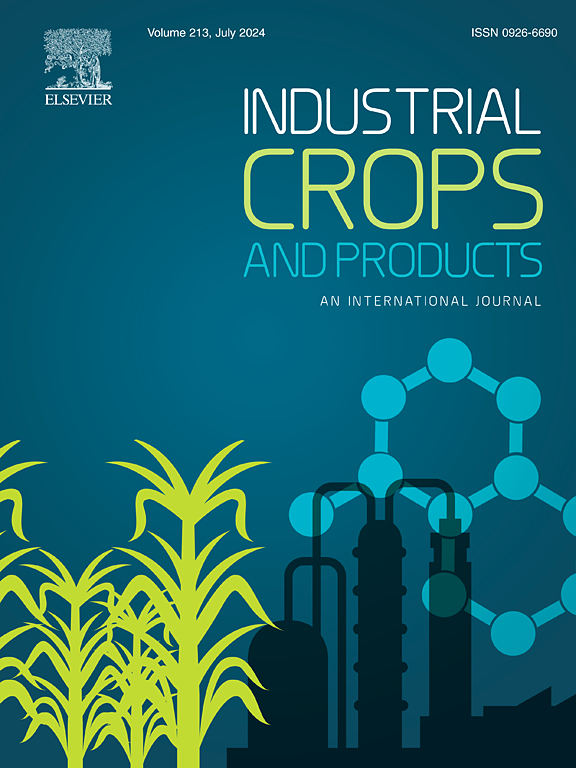油棕树干内部纤维作为纸浆模塑包装材料的适用性
IF 5.6
1区 农林科学
Q1 AGRICULTURAL ENGINEERING
引用次数: 0
摘要
油棕树干(OPT)的内部部分,通常未被充分开发并降级到低价值用途,被评估为模塑纸浆包装的原料。采用中性亚硫酸盐半化学(NSSC)法制浆可有效降低木质素含量,亚临界水萃取(SCWE)法制浆可降低半纤维素含量。对纤维的形貌和化学性质进行了表征,并制备了纸质手抄片来评估粘合性能。在自由度相当的情况下,经nssc处理的OPT纤维的拉伸指数比商业回收纸浆的参考手板高约60 %,而SCWE处理的拉伸指数低45 %。所有纸浆类型都用于实验室规模成型包装托盘。除了一种SCWE变体外,托盘通过干燥保持其湿形状,并且与回收纸浆的参考托盘的机械完整性和尺寸稳定性相匹配。这些发现在定量和实验室规模上证明了将OPT的内部部分转化为高性能模塑纸浆包装的技术可行性,从而为一种主要的农业副产品提供了可持续的增值途径。本文章由计算机程序翻译,如有差异,请以英文原文为准。

The suitability of fibers from the inner part of oil palm trunks for molded pulp packaging materials
The inner part of oil palm trunk (OPT), typically underexploited and relegated to low–value uses, was evaluated as a feedstock for molded-pulp packaging. Fibers were generated by neutral sulfite semi-chemical (NSSC) pulping to effectively lower lignin content, and subcritical water extraction (SCWE) to reduce hemicellulose. Fiber morphology and chemistry were characterized, and paper hand-sheets were prepared to assess bonding performance. At comparable freeness, tensile index of hand-sheets from NSSC-treated OPT fibers was around 60 % higher than for reference hand-sheets from commercial recycled pulp, while SCWE treatment resulted in a 45 % lower tensile index. All pulp types were used for laboratory-scale molding into packaging trays. Except for one SCWE variant, trays retained their wet shape through drying and matched the mechanical integrity and dimensional stability of reference trays from recycled pulp. These findings demonstrate, quantitatively and at laboratory scale, the technical feasibility of converting the inner part of OPT into high-performance molded-pulp packaging, thus offering a sustainable valorization pathway for a major agricultural by-product.
求助全文
通过发布文献求助,成功后即可免费获取论文全文。
去求助
来源期刊

Industrial Crops and Products
农林科学-农业工程
CiteScore
9.50
自引率
8.50%
发文量
1518
审稿时长
43 days
期刊介绍:
Industrial Crops and Products is an International Journal publishing academic and industrial research on industrial (defined as non-food/non-feed) crops and products. Papers concern both crop-oriented and bio-based materials from crops-oriented research, and should be of interest to an international audience, hypothesis driven, and where comparisons are made statistics performed.
 求助内容:
求助内容: 应助结果提醒方式:
应助结果提醒方式:


